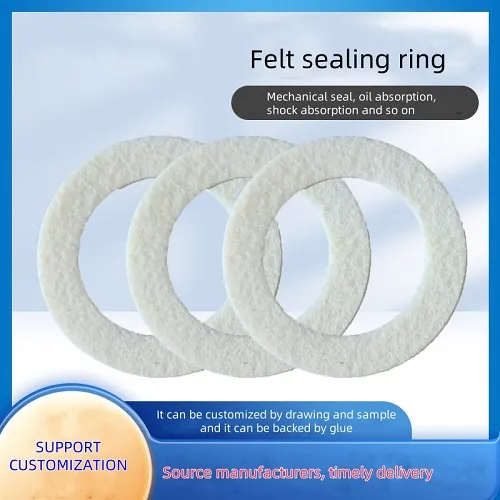Exploring the Importance of Felt Quality in Craft and Design
The Intricacies of Felt Quality A Craftsmanship Approach
Felt, an age-old fabric, has made a remarkable mark in various industries ranging from fashion to interior design. At its core, the quality of felt is not only a result of the materials used but also the craftsmanship involved in its production. Understanding felt quality requires an appreciation of the properties that make this unique textile so versatile and valuable.
Composition Matters
The primary factor in determining felt quality is the type of fibers used. Wool is the most commonly used material because of its natural elasticity, resilience, and ability to trap air, which provides warmth. High-quality wool fibers are long and have a natural crimp, allowing them to interlock tightly during the felting process. This not only results in a denser felt but also enhances its insulating properties. On the other hand, synthetic fibers like polyester and acrylic offer durability and colorfastness but may compromise the traditional feel and temperature regulation offered by wool.
The blend of materials also plays a critical role. Blended felts, combining wool with synthetic fibers or even cotton, can produce unique characteristics. For instance, a blend of wool and cotton may yield a softer texture suitable for clothing, while a wool and polyester combination could be ideal for products that require more rigidity and durability, such as industrial felt.
The Felting Process
The method of felting significantly affects the end result. Traditional wet felting involves agitating wet fibers, allowing them to mat together, while needle felting uses barbed needles to entangle the fibers without moisture. Each method produces felt with distinct qualities. Wet felting creates a softer, denser product, while needle felting allows for more delicate details and shapes. Expert artisans often develop their unique techniques, pushing the boundaries of what felt can achieve.
Quality control throughout the felting process is also paramount. Each batch of felt must meet specific standards regarding thickness, density, and texture. Variations can occur due to humidity and temperature, meaning that artisans must remain vigilant, adjusting their techniques as needed to ensure consistent quality. The best felt is not only uniform in appearance but also exhibits strength and flexibility.
felt quality

Aesthetic Qualities
Felt is not just functional; it is also a medium of artistic expression. The quality of felt can be appreciated through its visual and tactile properties. High-quality felt boasts a rich depth of color, often achieved through natural dyes that enhance rather than mask the fibers. The surface should be smooth and may showcase unique textures or patterns that reflect the artisan's skill.
Moreover, the tactile experience of felt contributes to its quality. Soft, plush felt invites touch, enhancing the user’s emotional connection to the product. This sensory aspect is crucial, especially in fashion where the feel of a material against the skin can influence purchasing decisions.
Sustainability and Ethical Considerations
In recent years, concerns regarding sustainability have reshaped the discourse around felt quality. Consumers are increasingly demanding products crafted from ethically sourced materials. This shift encourages manufacturers to employ eco-friendly practices, including the use of organic fibers and non-toxic dyes. Such attention to environmental responsibility often correlates with high-quality craftsmanship, as artisans who prioritize sustainability are typically more invested in their materials and processes.
Conclusion
In conclusion, the concept of felt quality is multifaceted, encompassing the choice of materials, methods of production, aesthetic appeal, and ethical considerations. A high-quality felt embodies the essence of thoughtful craftsmanship, where each piece tells a story of its creation, purpose, and the hands that made it. For designers and consumers alike, recognizing and valuing these qualities can lead to a greater appreciation of felt as not just a fabric, but as a meaningful component of art and culture. Whether in cozy home decor, elegant fashion, or innovative design, quality felt has the potential to inspire and endear itself to all who encounter it.
-
What Makes Felt a Great Choice?NewsNov.19,2024
-
Total Mixed Ration (TMR) Feed for CattleNewsNov.19,2024
-
The Ultimate Guide for Felt Polishing WheelsNewsNov.19,2024
-
Industrial Felt for Various ApplicationsNewsNov.19,2024
-
Felt Makeup Bags and Inserts BagsNewsNov.19,2024
-
Choosing the Right Hotel TowelsNewsNov.19,2024
-
Your Go-To Guide For Affordable Wholesale Wool FeltsNewsOct.31,2024







